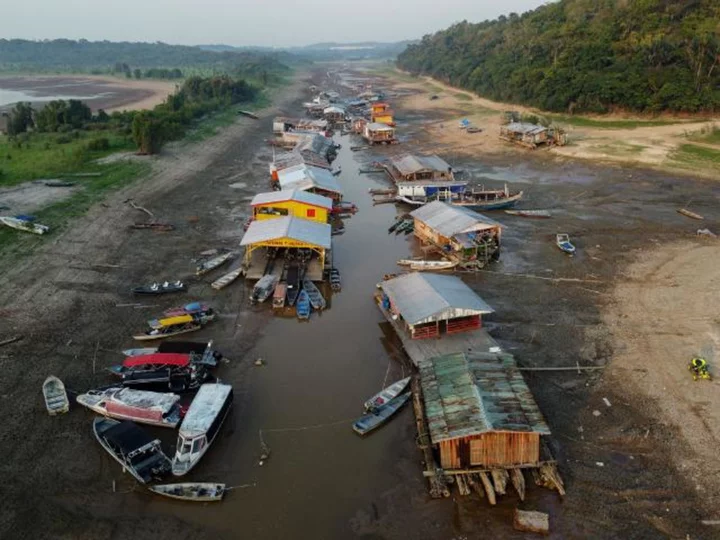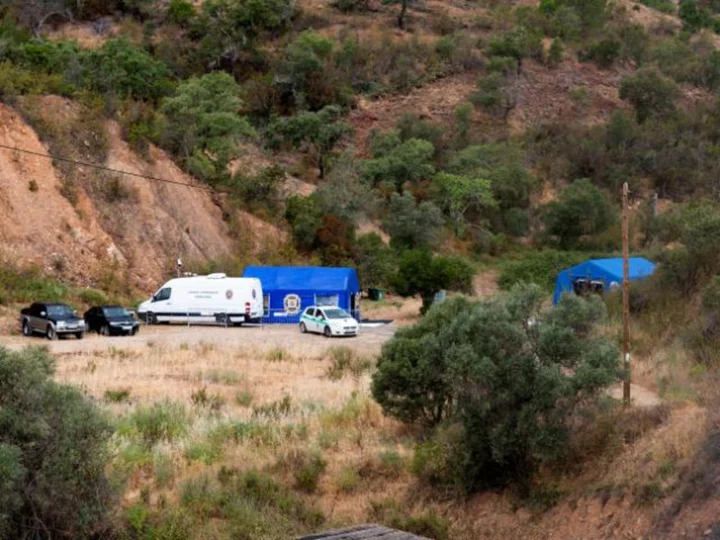A floating village now lies stranded on a lakebed in Brazil's Amazon as severe drought leaves communities struggling to access food, fresh water and fuel.
Dramatically receding water levels in Lake Puraquequara, east of Manaus, the capital of the state of Amazonas, have left boats and floating buildings marooned in the mud.
It is the latest example of the devastating impacts of heat and drought on this part of Brazil -- earlier this month more than a hundred river dolphins washed ashore dead as water temperatures soared -- and authorities say the situation is set to get worse.
Lake Puraquequara is part of the Rio Negro river system, which has been near record-low since the end of September, according to the state's civil defense authority. "Declining water levels are having a profound impact," a spokesperson for the authority told CNN.
Some residents have resorted to digging wells in the cracked lakebed in an attempt to reach water.
"Our shops have no customers. We are isolated, boats cannot enter or leave the lake," local resident Isaac Rodrigues told Reuters. "We're going to be here until God sends us water."
The severe drought extends across the state. Forty-two municipalities of the 62 in the state were in an emergency situation with more than 300,000 people affected, the civil defense authority told CNN Monday.
And the situation is expected to get worse. Around 500,000 people and 50 municipalities are likely to be affected over the next several weeks, "since we are still predicting a few months with reduced rain levels," the spokesperson for the state authority said.
In late September, Amazonas Gov. Wilson Lima declared a state of emergency and announced a package of assistance measures, including providing food to those most affected by the drought.
"There are many people already having difficulty accessing food, food security, drinking water and other important inputs," he said in a statement at the time.
The drought is also devastating wildlife in the state's rivers.
Scientists believe the unusual deaths of more than 100 dolphins in Lake Tefé, west of Manaus, at the beginning of October may be linked to the searingly high water temperatures.
"It's still early to determine the cause of this extreme event but according to our experts, it is certainly connected to the drought period and high temperatures in Lake Tefé, in which some points are exceeding 39 degrees Celsius (102 degrees Fahrenheit)," the institute said in comments carried by CNN affiliate CNN Brasil.
It is currently the dry season in the Amazon, but the drought has been exacerbated by El Niño, a natural climate pattern that originates in the tropical Pacific Ocean and affects weather around the world.
Underlying El Niño is the long-term trend of global warming that is leading to more frequent and more severe extreme weather events, like drought and heat.
Swaths of South America, including Brazil, have been gripped by severe and deadly heat as the region moves from winter into spring.
This heat in August and September -- during which Brazil experienced temperatures above 40 degrees Celsius (104 Fahrenheit) -- was made at least 100 times more likely by the human-caused climate crisis, according to a study published Tuesday by the World Weather Attribution initiative.









